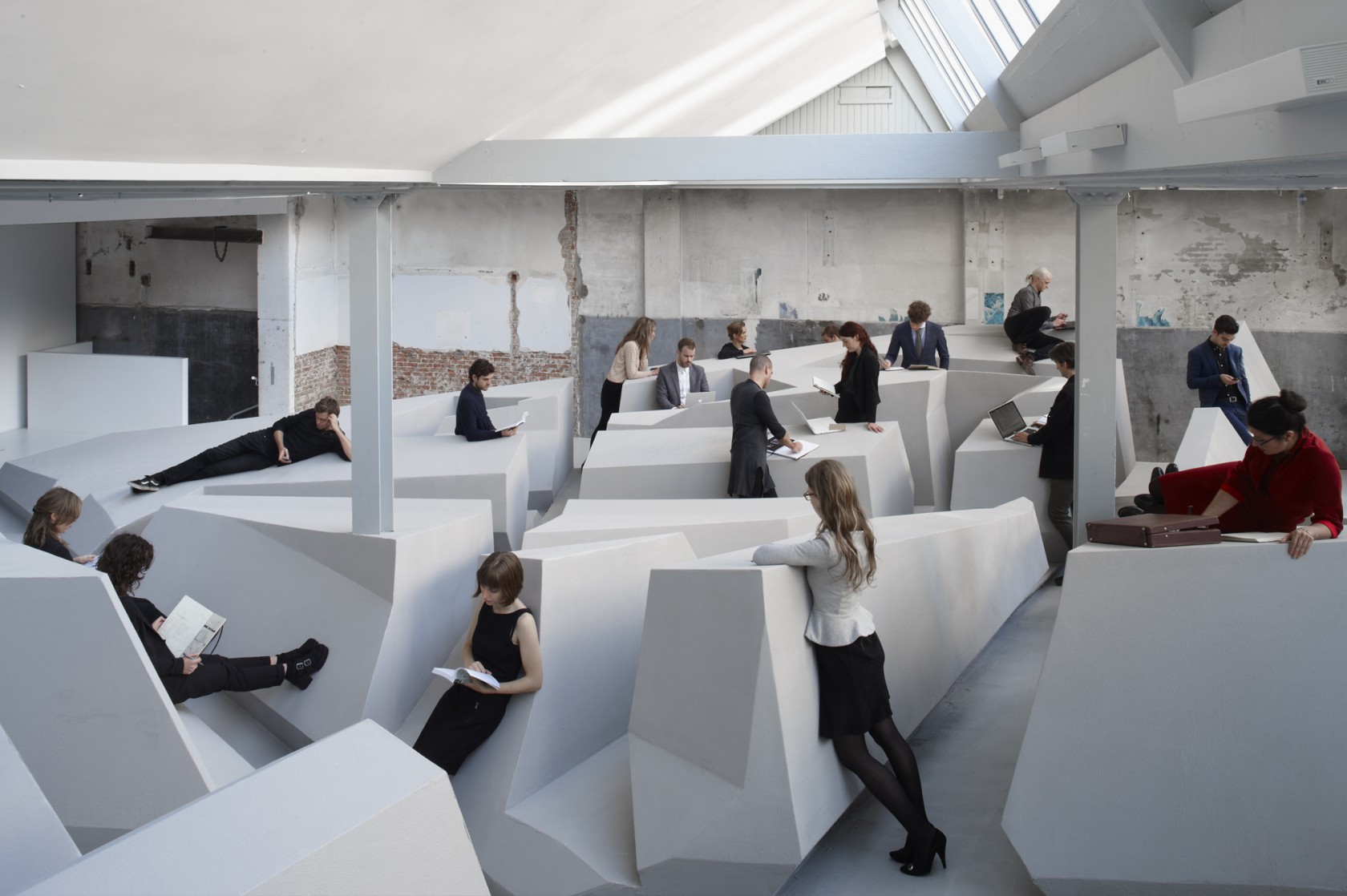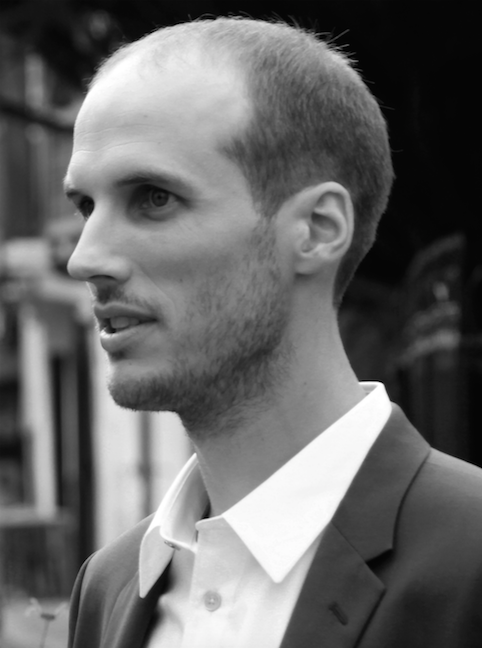
The End of Sitting
Pondering the format of the body
Last year, Amsterdam-based architectural office Rietveld Architecture-Art-Affordances (RAAAF) collaborated with artist Barbara Visser to design an installation entitled The End of Sitting. This installation was cited in many news platforms (e.g. Wired, Huffington Post, La Repubblica, et al) and more recently in an article written by Aaron Betsky for the architectural magazine The Evolving Landscape of Architectural Affordances (27 July 2015). This term ‘affordances’, described by Betsky as being a new buzzword in architecture schools these days, is precisely what is at stake in the installation The End of Sitting, which offers a built environment where bodies can adopt multiple positions, in opposition to the traditional standing versus sitting ones. Nevertheless, it is my conviction that this project remains problematic for two main reasons that have to do with its refusal to address the notions of the norm and the politics of work.
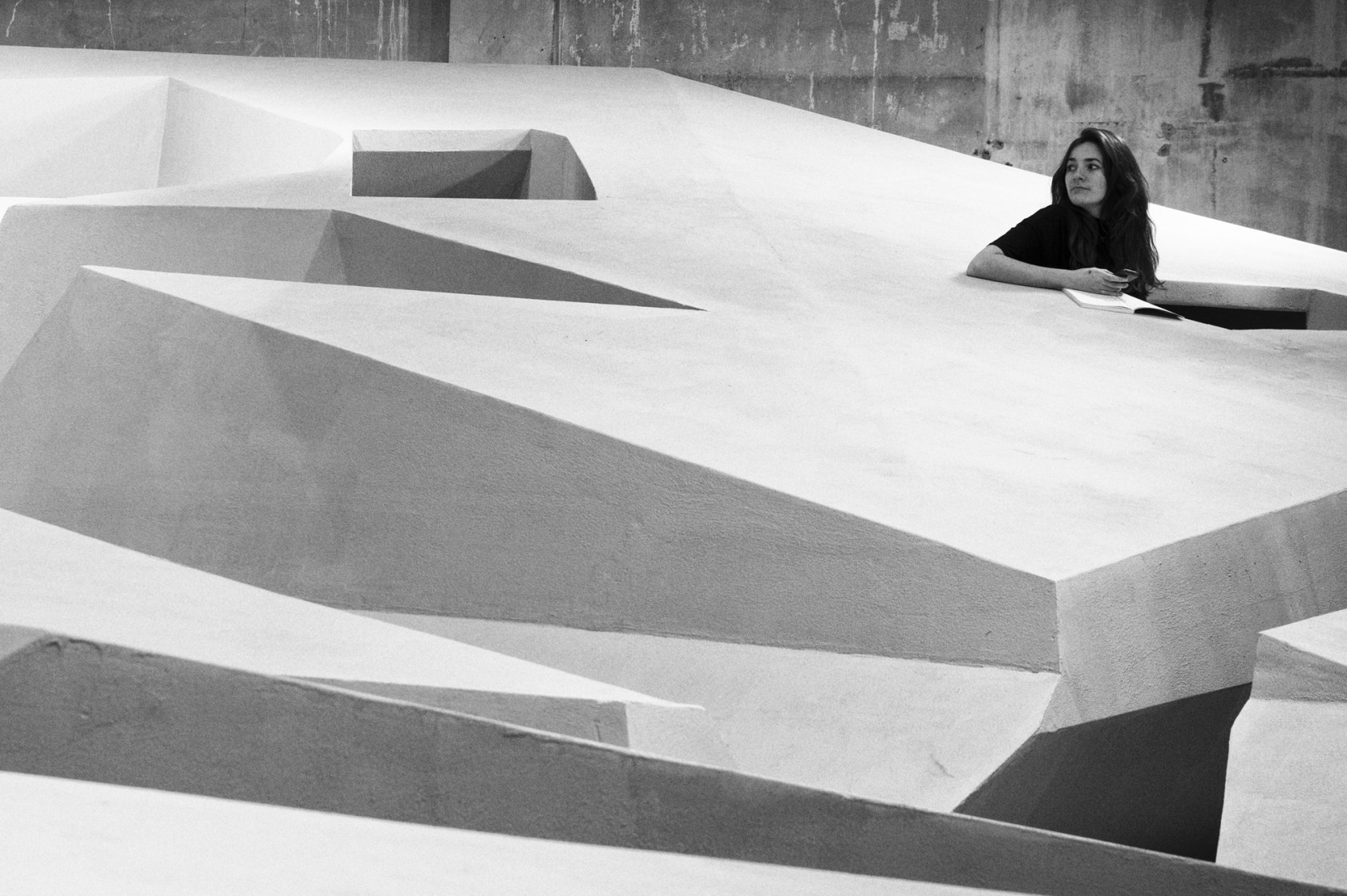
The installation was a response to a call from the Chief Government Architect of the Netherlands to rethink the office space paradigm, following scientific studies that reported the long-term health risks induced by prolonged sitting. The End of Sitting thus registers within a biopolitical project that considers the assemblage formed by architecture and human bodies, in relation to the lives of the latter – something inherent to the architecture of the last two centuries, but not often made explicit by its designers. Rethinking the office space design paradigm necessarily involves rethinking the work paradigm, too, as the function of a space and its physicality are necessarily intertwined. We observe such a shift in the way companies like Google and Facebook have organised their places of work, both spatially and temporally. This raises the following question: for whom is the work paradigm reformulated? The photographs of the installation give us an indication of the explicit and implicit answers the designers bring to this question, both at the social and corporeal levels.
These photographs are disturbing due to the extreme uniformity of the figures they represent as being users of the space. Besides their different genders, all bodies wear the marks of a particular class of worker: young, able, concerned with health and fashion (and having the means to be concerned), and work exclusively with specific mediums: printed and digital. It might not be surprising that these figures are none other than RAAAF employees themselves, asked to pose in the environment that they contributed to designing. Thinking that what I describe here is merely a representational issue that addresses the way a firm communicates about its projects rather than the project itself, would be a mistake. If indeed the figures shown in the photographs are employees of RAAAF (or any other architectural firm, for that matter), we might want to be concerned about the uniformity of architects’ imaginations concerning the people for whom they design. Although this critique is potentially unfair since it is based on an uninformed supposition, anyone who has visited or worked in a European architecture office will probably recognise such uniformity and the potential consequences it can have on design itself.
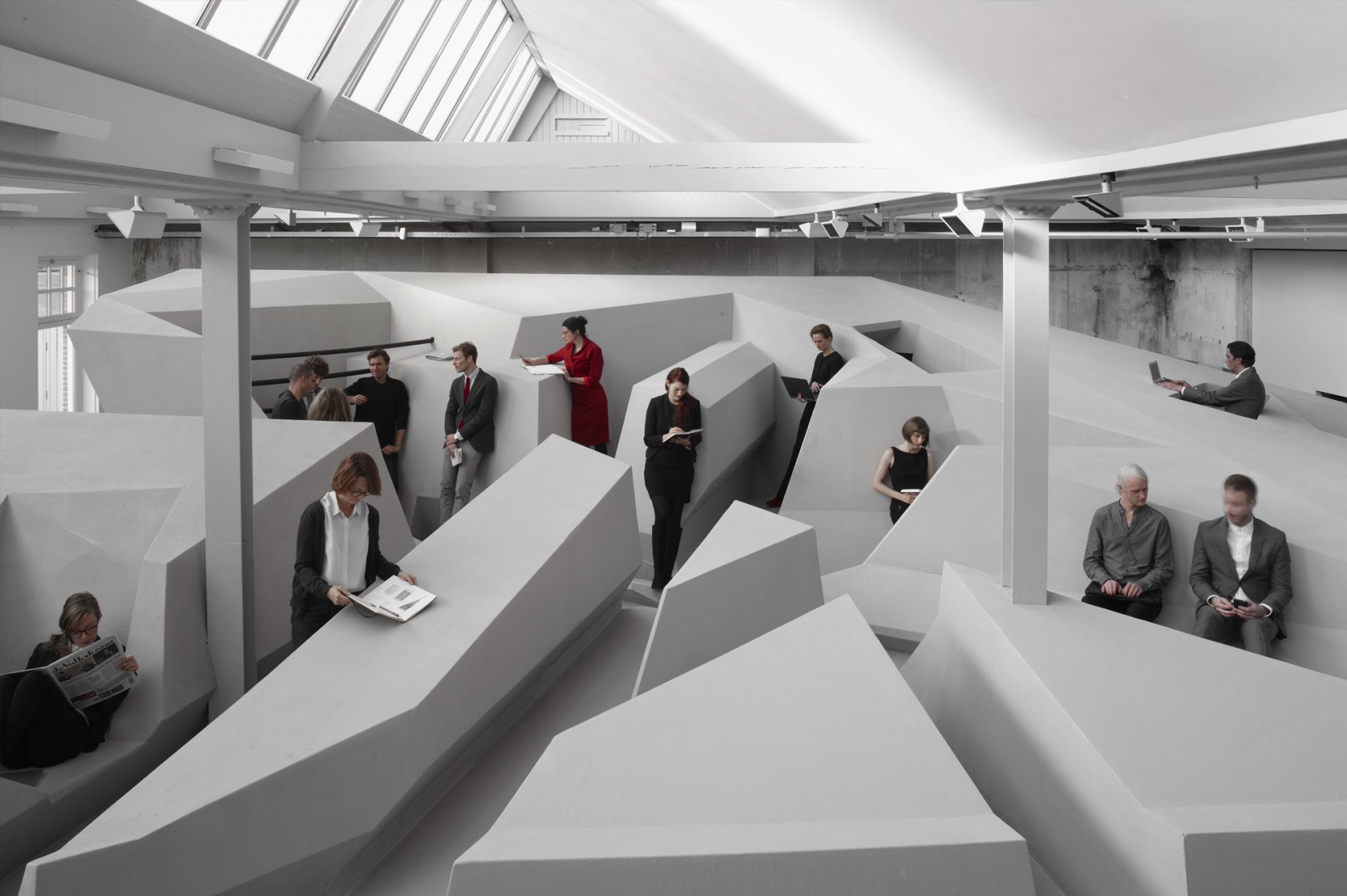
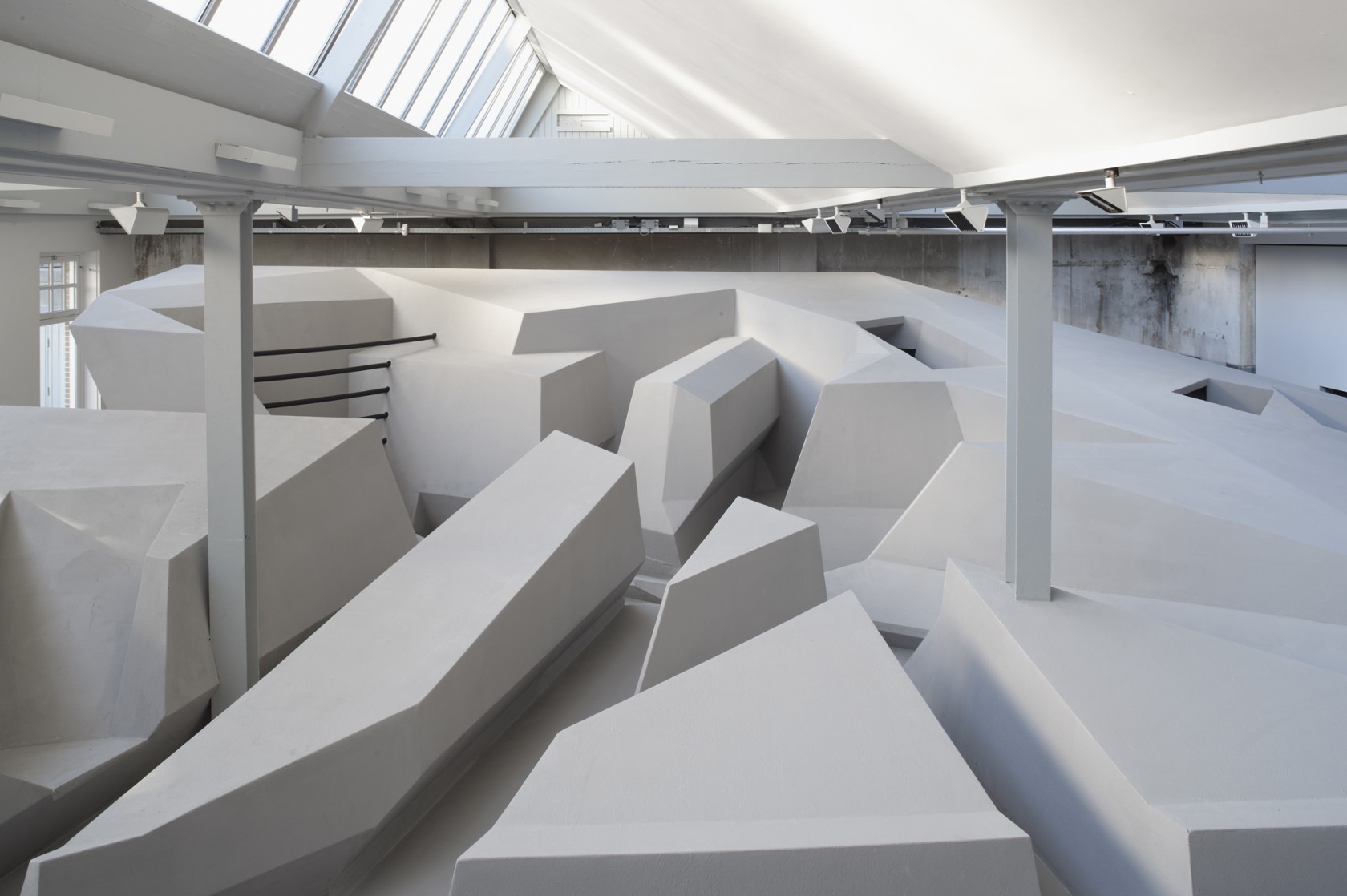
Irremediably, the uniformity of the imagination develops a uniformity of the bodies considered in the design. Even in the case of an interesting and rare project like The End of Sitting, in regard to the physicality it proposes, the considered bodies remain fundamentally the indexed norm: the multiplication of body positions is not enough if all of them are calibrated with a normative body. Although contemporary architecture does not necessarily consider this normative body through an explicit designation like the modernist one (i.e. Le Corbusier’s Modulor, Ernst Neufert’s Architects’ Data, Henry Dreyfuss’s Joe and Josephine), this figure remains implicitly present. What I argue for here is not that they should be calibrated with more representative bodies: one using a wheelchair, one of above-average weight, one of below-average height, and so forth. Calibration considers bodies through statistical characteristics in relation to their anatomy. Struggling against calibration implies designing for the unknown, or “designs that do not know what bodies aren’t”, as we tried to articulate with Minh-Ha T. Pham in a recent essay entitled Spinoza in a T-Shirt (The New Inquiry, July 1, 2015).
This is where the new work paradigm developed by companies like Google and Facebook begins to crackle: behind all the care for the well being of their employees offered by their ‘campuses’, there is a strategy of productivity control not dissimilar to the previous forms of capitalist spatiality, from the assembly line to the open office. The normative worker’s body in these companies is itself calibrated to reach its optimal degree of creativity and productivity; therefore, design has to form the body to reach or maintain such a degree. On the contrary, a non-calibrated environment tends toward a real multiplicity of affordances for all bodies. With this agenda, the act of design consists of this complex question: how can we reconcile the apparent contradiction between the resolute essence of design and the indefinite aim of non-calibration? The answer seems to be more empirically formulated than theoretically formulated.
